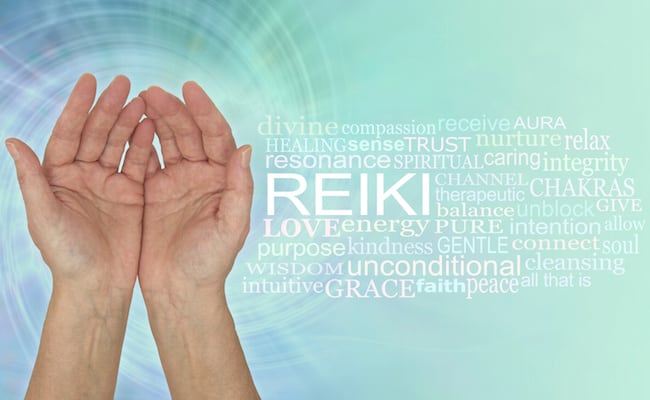Reiki has witnessed an evolution in its training methods over time. The traditional approach to Reiki training, rooted in the apprenticeship system and emphasizing gradual progression and practical experience, has given way to contemporary practices that offer faster-track options and shorter courses. These shifts in training methods have sparked a discussion around the differences between traditional and contemporary approaches at all levels of Reiki.
By understanding the dynamics of this transformation, practitioners and aspiring Reiki Masters can make informed choices regarding their training journey.
Level 1 Reiki
The current trend in Reiki courses includes shorter durations, integrated attunements, limited practice time, and the provision of course materials. However, some Masters still prefer the traditional approach with comprehensive training over multiple sessions.
Traditional Approach
- Longer Duration: Until the mid-1990s, the Reiki Level 1 course was taught over four sessions, spanning two or four days or four evenings.
- Slow Energy Build-up: The traditional method allowed the Reiki energy to build up gradually over the four sessions through four separate attunements.
- Comprehensive Training: The course included a comprehensive explanation of the Usui Reiki Healing System, including the story of Dr. Usui’s discovery of Reiki, hand positions for treating oneself and others, and guidance on using Reiki for injuries, accidents, animals, and plants.
- Oral Tradition: The teaching was primarily oral, with no notes or handouts given to students.
Contemporary Approach
- Shorter Duration: In recent times, many independent Reiki Masters have chosen to reduce the teaching time to one day, two evenings, half a day, or one evening.
- Integrated Attunement: Shorter workshops now often feature a single, non-traditional integrated attunement that provides the Reiki energy all at once.
- Limited Practice Time: Shorter courses usually do not include practice time for treatments, and the focus is primarily on attunement rather than comprehensive training.
- Course Material: Some Masters provide notes to students, either as handouts or a comprehensive manual, which may contain more up-to-date information about Dr. Usui and Reiki.
- Additional Content: Some Reiki courses include extra topics such as energy, auras, chakras, additional hand positions for specific ailments, and relaxation techniques using Reiki with meditation and visualization.
- Lack of Confidence: Students who go through short attunement processes without comprehensive training may need more confidence in their ability to channel Reiki effectively.

Level 2 Reiki
Traditional Reiki follows a slower approach with a focus on practice and a longer timeframe between degrees. Contemporary Reiki tends to have a shorter timeframe and may place more emphasis on symbols.
Traditional Approach
- Slow and Gentle Approach: There is a preference for a slow and gentle approach in traditional Reiki. Masters recommend a gap of at least three months between the First and Second Degrees to allow the body to adjust to the higher vibrations introduced by the initial attunement(s).
- Emphasis on Self-Treatment and Practice: Traditional Masters encourage students to have ample practice with self-treatment and preferably some experience in treating others before considering further Reiki courses. There is no time limit, and students are encouraged to take as long as they need.
- Two-Day Course: The Second Degree Reiki course is traditionally taught over two days, allowing time for thorough instruction and practice.
Contemporary Approach
- Shortened Timeframe: There is an increasing trend among Reiki Masters to bypass the three-month requirement and allow students to take Reiki 2 soon after Reiki 1. Some Masters teach both levels in a single weekend, often immediately following a one-day Reiki 1 course.
- Symbol Dependency: Some Masters who received both levels in consecutive days may believe that Reiki does not work effectively without using the symbols. This is a misconception, as Reiki can be effective without symbols, although symbols can enhance the practice.
- Single Attunement: A Second Degree Reiki course usually includes one attunement, although some Masters may perform two or three attunements. In Japan, this level is sometimes split into three separate parts, with an attunement given each time.
Level 3 Reiki
The ensuing differences reflect general trends and variations in Reiki Master training practices, where traditional and contemporary approaches coexist, while individual Masters may have their unique approaches and methods.
Traditional Approach
- Time Requirements Between Attunements: Traditional Masters may require a minimum of three years of experience in Reiki, preferably as a professional practitioner, before accepting students for Master training. They emphasize the importance of gaining practical experience before advancing to the Master level.
- Apprenticeship System: The prevalent traditional training method until the early 1990s was the apprenticeship system. Student Masters would work alongside an experienced Master for at least a year, gradually learning how to organize and teach Reiki classes.
- Gradual Progression: Traditional Masters offer courses for Reiki Master training, typically ranging over a period of time usually considering the progress of their practice. This level is divided into parts – Master and Teacher levels.
Contemporary Approach
- Time Requirements Between Attunements: Contemporary Reiki Master training can vary widely in terms of duration and approach. Some may allow to take up the level 3 attunement within a short time, ranging from a few months, weeks, or even days, while others may take a more comprehensive and extended period.
- No Practitioner or Apprenticeship Requirements: Some contemporary Masters encourage students to become Reiki Masters as soon as possible, without the requirement of an apprenticeship or practitioner experience. This allows for a fast-track approach where all levels of Reiki can be completed within a short timeframe.
- Short Courses: Many contemporary Masters offer short courses for Reiki Master training, typically one day to a week. These courses provide instruction on the Master symbol, attunement processes for all three levels of Reiki, and some basic teaching skills.
- Variation in Content and Quality: Due to the diverse range of training courses, there is considerable variation in the content, style, and quality of training offered by contemporary Reiki Masters. The duration of the course can influence the depth of instruction and practice opportunities provided.
- Symbol Variations: Some contemporary Masters may use symbols from systems other than the original Usui Reiki Ryoho. They may incorporate Tibetan Reiki symbols, which are known for their powerful and intense healing energy but can have stronger energetic challenges.
- Varying Cost: The cost of Reiki Master training can vary significantly, with some courses being relatively inexpensive while others may be more costly. The price alone does not necessarily reflect the quality of instruction or the effectiveness of the Master as a teacher.
The approaches used in all three levels of Reiki training, whether traditional or contemporary, showcase the diverse range of practices within the Reiki community. Traditional methods often emphasize a gradual and patient approach, with a focus on developing a strong foundation through experience and self-treatments before progressing to higher levels. On the other hand, contemporary approaches tend to offer more flexibility and may condense the training period, allowing students to achieve multiple levels in a shorter time frame. While important in both approaches, the use of symbols and attunements may vary in timing and emphasis. Ultimately, the choice between traditional and contemporary Reiki approaches lies with the individual, as each method offers its unique benefits and opportunities for growth. It is through exploring these differences that Reiki practitioners can discover their own path and deepen their connection to this ancient healing art.
Article by Reiki Master Supriya Nair
Free eBook download: We’ve created an eBook with our best articles on this topic, and offer it for free to all our newsletter subscribers.


Supriya Nair
Dr. Supriya Nair, IMD, PhD has been a Reiki and Kriya Yoga practitioner since 2008. A conduit between the scientific and spiritual worlds, Dr. Supriya has a profound fascination for the healing arts. Apart from holding the title of Usui Reiki Master Teacher, Dr. Supriya is a certified Health Coach and proficient in various integrative medicine modalities. She is also the author of "Train Your Brain to Unchain Your Pain."
To get in touch with Dr. Supriya, you can reach out via email at [email protected] or connect with her on Facebook at facebook.com/supriyanair111 and on Instagram at instagram.com/proconscious.cafe.





Leave a Reply